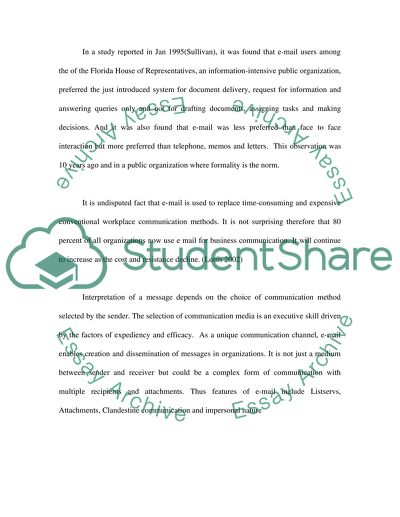Cite this document
(Business Email Users in the U.S Term Paper Example | Topics and Well Written Essays - 2126 words, n.d.)
Business Email Users in the U.S Term Paper Example | Topics and Well Written Essays - 2126 words. Retrieved from https://studentshare.org/information-technology/1536927-managment-has-email-replaced-the-need-for-face-to-face-contact-between-managers-and-staff
Business Email Users in the U.S Term Paper Example | Topics and Well Written Essays - 2126 words. Retrieved from https://studentshare.org/information-technology/1536927-managment-has-email-replaced-the-need-for-face-to-face-contact-between-managers-and-staff
(Business Email Users in the U.S Term Paper Example | Topics and Well Written Essays - 2126 Words)
Business Email Users in the U.S Term Paper Example | Topics and Well Written Essays - 2126 Words. https://studentshare.org/information-technology/1536927-managment-has-email-replaced-the-need-for-face-to-face-contact-between-managers-and-staff.
Business Email Users in the U.S Term Paper Example | Topics and Well Written Essays - 2126 Words. https://studentshare.org/information-technology/1536927-managment-has-email-replaced-the-need-for-face-to-face-contact-between-managers-and-staff.
“Business Email Users in the U.S Term Paper Example | Topics and Well Written Essays - 2126 Words”, n.d. https://studentshare.org/information-technology/1536927-managment-has-email-replaced-the-need-for-face-to-face-contact-between-managers-and-staff.


